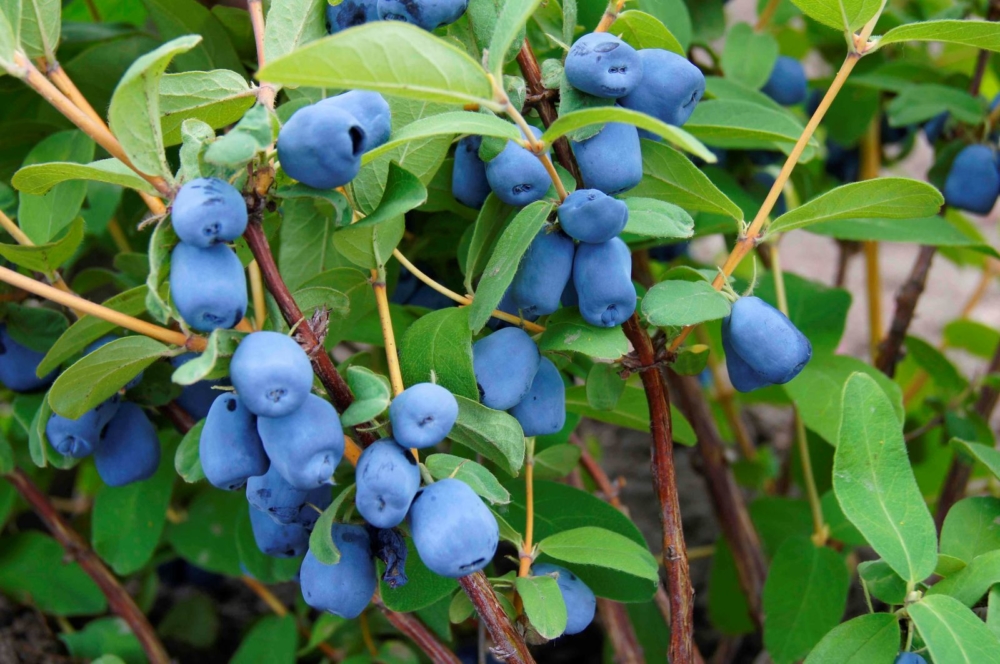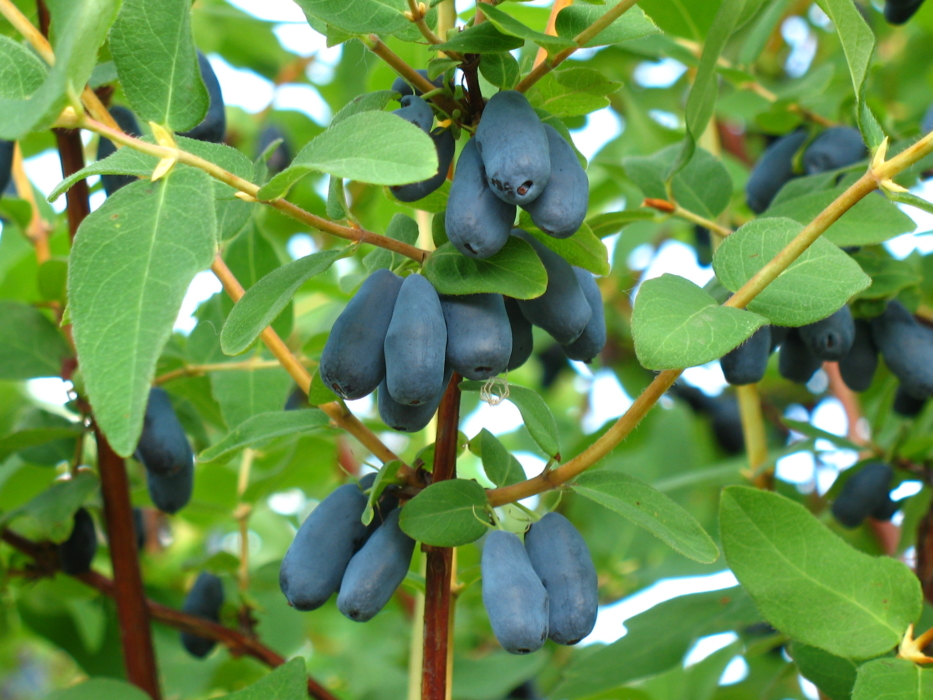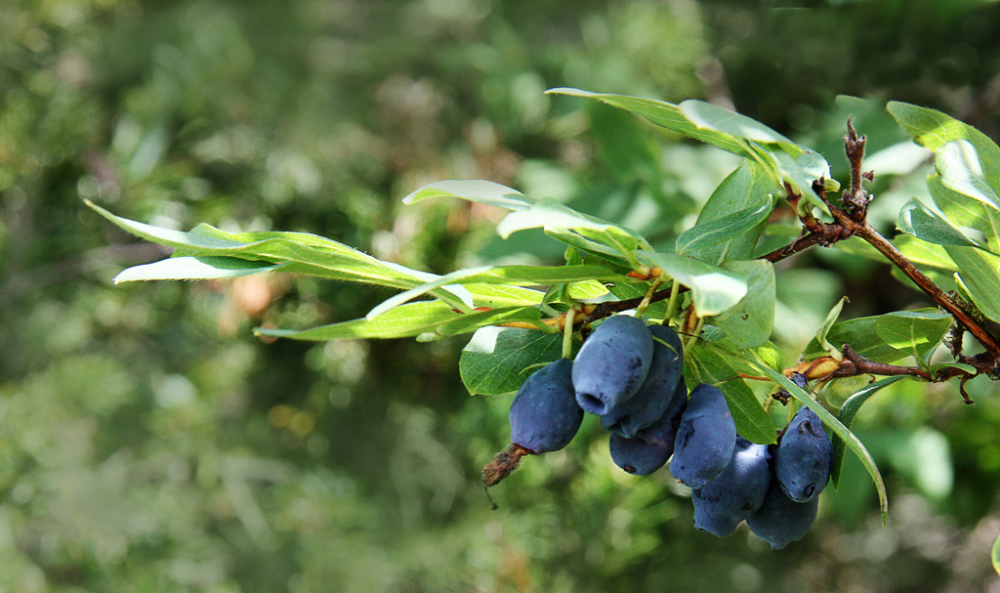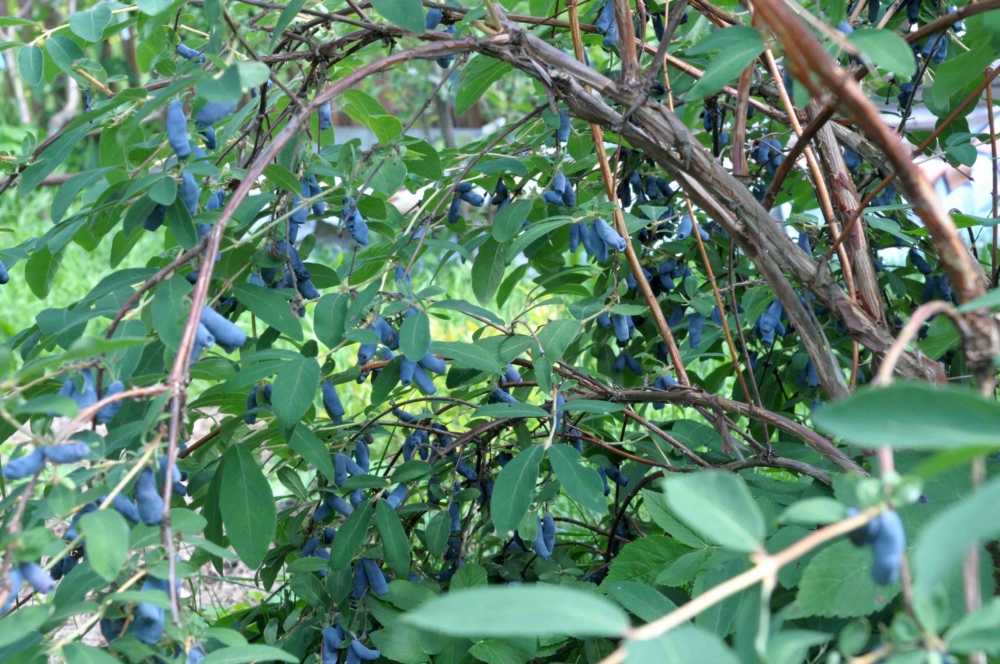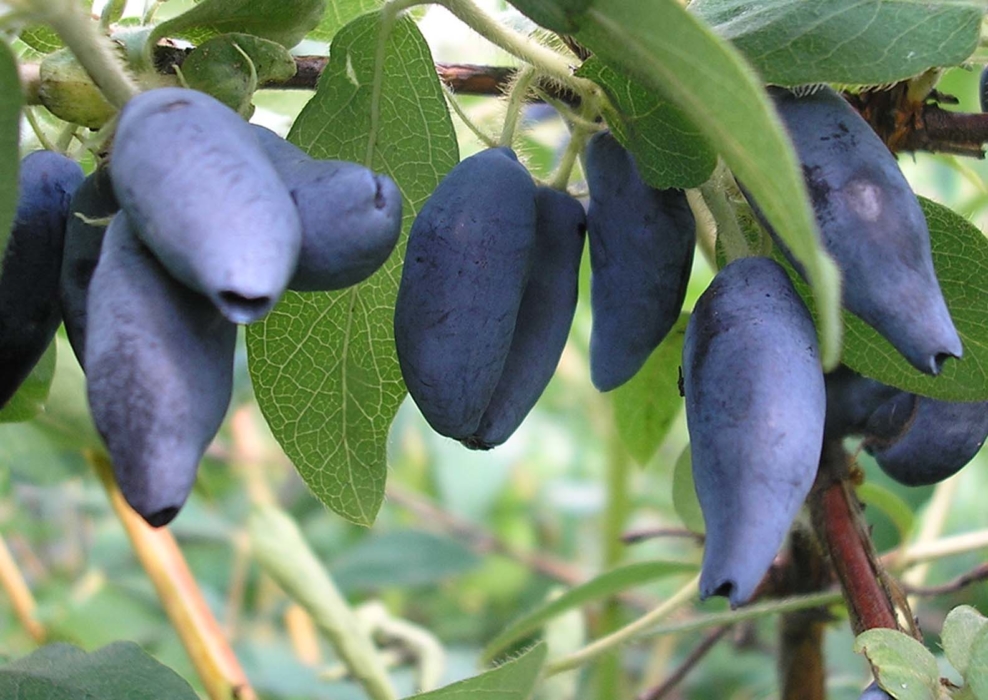In 1984, breeders cultivated Kamchatka wild honeysuckle. As a result of the work, they received a new variety for growing in gardens - the Kamchadalka honeysuckle. She immediately began to be popular in the territory of the USSR. To this day, shrubs are found in many gardens. We will talk about him in detail in this article.
Material Content:
Description of the variety of honeysuckle "Kamchadalka"
The plant is in the form of a compact shrub up to one and a half meters high. The crown is neat, narrow and thick, conical. The shoots are short, thick, the bark on them is green. The leaves are oval, light green. Inflorescences consist of only two flowers, painted in yellow. To see the flowering of Kamchadalka is a great success, because only one day is allotted to it.
In the description of varieties of honeysuckle, gardeners are more interested in the type of crop. The bush gives berries large, elongated, and from one it is possible to collect up to 2 kg per season. Fruits are up to 2.8 cm long, and the diameter varies within 1.5 cm. The skin is blue, covered with a waxy coating, dense, so the berries can be transported without fear. The flesh is without bitterness, sweet, endowed with a slight acidity, juicy, consists of fibers, but they are not noticeable when chewed. The aroma of the forest from the fruits is strong, they make amazing jam!
It should be understood that the taste qualities of honeysuckle may vary depending on the region of growth and climatic conditions. According to a survey of gardeners from all regions, Kamchadalka scored from 3.8 to 4.6 points out of 5 for taste - the residents of Tomsk rated it highly.
The composition of the fruits includes many minerals useful to humans: these are acids, sugar, vitamins C and B1, and minerals. In folk medicine, honeysuckle has established itself as an excellent helper to alleviate the condition with hypertension, it strengthens the walls of blood vessels, removes toxins due to the diuretic effect.
Outdoor landing
Honeysuckle is planted in spring or autumn. But since Kamchadalka has the property of early budding, it is recommended to land in autumn. In the southern regions, this is the end of September and mid-October. In more severe areas, time needs to be selected individually, landing needs to be done 2-3 weeks before frosts.
The place is chosen sunny, but protected from the winds. You can fence the bushes or plant in a circle other tall plants that protect from drafts, but do not close from the sun. Not suitable for growing hills with dry soil. In such conditions, the honeysuckle will not bloom, it will constantly increase shoots. Excellent “Kamchadalka” feels itself in the lowlands, where groundwater passes a meter from the surface.
The bush loves fertile black soil, does not take root on sandstones. The acidity of the soil should be from 5.5 to 6.5, and if there is acidification, it is recommended that neutralization with lime be carried out a month before the proposed planting.
For planting, one-year-old or two-year-old seedlings are chosen. The technology of their placement in the ground is as follows:
- A week before planting, make holes 40 to 50 cm wide and depth. Leave a distance of 2 m between the pits.
- Put drainage at the bottom, it can be rubble or chipped brick.
- Fill the wells with soil prepared from equal parts of compost and black soil with a kilogram of wood ash. You can add 50 g of superphosphate. Pour.
- When planting a seedling in the pits, make small elevations along which spread the roots. Fill with soil to the root neck, water well, sprinkle the resulting cavity again with earth.
- Mulch the surface of the soil with sawdust.
Immediately after planting, the honeysuckle cannot be pruned, it can lose inflorescences and slow down growth.
How to care for a plant
A young, only planted bush, you need to water steadily, as soon as the soil begins to dry out. Thus, the plant will take root more quickly. Adult bushes are recommended to be irrigated only three times a month, with the exception of dry days.
Bushes happily respond to swimming under a watering can or from a hose. The procedure can only be performed in the evening, when the sun goes below the horizon.
Honeysuckles for good growth and fruiting need top dressing, and fertilizers are applied according to the following scheme:
- After the snow melts under each bush, you need to make a bucket of water with a glass of urea.
- When the buds open, they add humus or manure - a bucket around the trunk. After a week, apply watering with nitrogen.
- Before flowering, foliar top dressing is needed, "Aquarin", "Solution" and the like in composition and purpose are suitable.
- In autumn, when the foliage from the bushes is already removed, add 150 g of wood ash to each soil in the soil, slightly digging it.
We have described an incomplete list of care work. About pruning and pollination of shoots we will discuss later.
Pollination and pruning technology
Edible honeysuckle “Kamchadalka” is a self-fertile variety, that is, growing on a site in a single copy or with bushes of the same variety, there will be no fruiting. In order for the bushes to give a crop, next to them you need to plant pollinators, and the following varieties of honeysuckle are perfectly suitable:
- "Blue Spindle";
- "X";
- "Parabel";
- “In memory of Gidziuk”;
- "Cinderella".
Pruning shoots of honeysuckle is a must, not only the aesthetic appearance, but also the yield depends on it. Pollinating insects do not penetrate the thickened crown; the color crumbles. If even a bumblebee or a bee pollinates the flowers inside the crown, then the berries will be small and sour from a lack of sun.Pruning is done in spring and autumn, but only for adult bushes, from the age of 5 years. In young specimens, only diseased and frozen shoots can be removed.
We will tell you more about the process:
- Spring pruning - sanitary, involves the removal of diseased, weak and frozen twigs.
- In the fall, a major haircut is made. It is necessary to leave the year-old healthy shoots as much as possible, and remove the old and sick ones. The root shoots, branches that thicken the crown and those that grow inward are cut off.
The bush should consist of 5 skeletal healthy branches, the rest are cut. Starting from the age of seven, you need to rejuvenate the pruning every 3 years, which will retain the fruiting and life of the bushes up to several tens of years. To do this, thick shoots are cut off almost to the root selectively; young shoots will go from the stumps next year.
For a haircut, you need to take only a sharp secateurs, and old wide branches can be cut with an ax. The places of cuts are greased with garden varnish or powdered with finely crushed coal.
Berry ripening period
When growing honeysuckle, you should not hope that there will be a decent harvest in the first or second year. After planting one-year-old cuttings only for the next season, it will be possible to try the fruits, which may be no more than a handful. Abundant fruiting begins from 3-4 years after planting, and from one bush it will be possible to collect up to 2 kg of berries. There were times when a well-developed bush, which was well taken care of, brought 3.5 kg of fruit per season.
The ripening period of honeysuckle varies from mid-June to mid-July. The fruits ripen unevenly, which is a significant minus of the variety, and harvesting is carried out 2-4 times. Productivity does not depend on climate, the same number of berries can be harvested both in hot and cold summers. Only taste will vary.
In the southern regions there are problems associated with a long and warm autumn. After harvesting, honeysuckle can bloom repeatedly, and the berries have time to ripen before frost. But the quality of the fruits that will be for the next season, however, differs not for the better. Winter thaws in warm regions are also dangerous for the bush. The tree quickly responds to a change in temperature, the buds swell, and subsequent frost knocks them down.
Berries are well stored, transported. Their purpose is universal - you can eat fresh, cook jam and juice, make wine.
Winter preparations
The variety is adapted to frost and can easily overwinter even at temperatures below -35 degrees. Adult bushes do not need shelter, but young, only planted seedlings, must be covered with burlap.
The problem may be birds that gnaw buds from the honeysuckle bushes in winter. From them, gardeners recommend using nets that cover the trees in autumn.
In autumn, when the foliage slept and was trimmed, all the garbage in the form of branches, grass, foliage and mulch should be removed to the side of the trunks. The fact is that many pests insects take refuge in such a “blanket” near the honeysuckle, and in the spring they begin to attack the bushes.
Protection against diseases and pests
The Kamchadalka honeysuckle has a high immunity to diseases. Only fungus, which manifests itself as brown spots on the foliage, can hit. Fungicide treatment will help, but you need to choose one that is neutralized before the berries are picked.
Of insects, aphids and midges are terrible. If such guests appear, treat with insecticides.
Ripe berries attract birds. You can protect the crop from birds by throwing nets on the bush.
Kamchadalka is a good, picky and productive variety of honeysuckle. With proper agricultural technology and following the recommendations described above, the bushes will delight you with health and tasty, healthy berries! But still, residents of the southern regions should look at other varieties, because with “Kamchadalka” problems may arise, which we described in the paragraph on the timing of fruit ripening.In the northern latitudes, the honeysuckle will take root well, will excellently bear fruit, without bringing unnecessary trouble. Be sure to plant this useful plant on your site, in winter, honeysuckle jam will remind you of warm summer days with its aroma!


